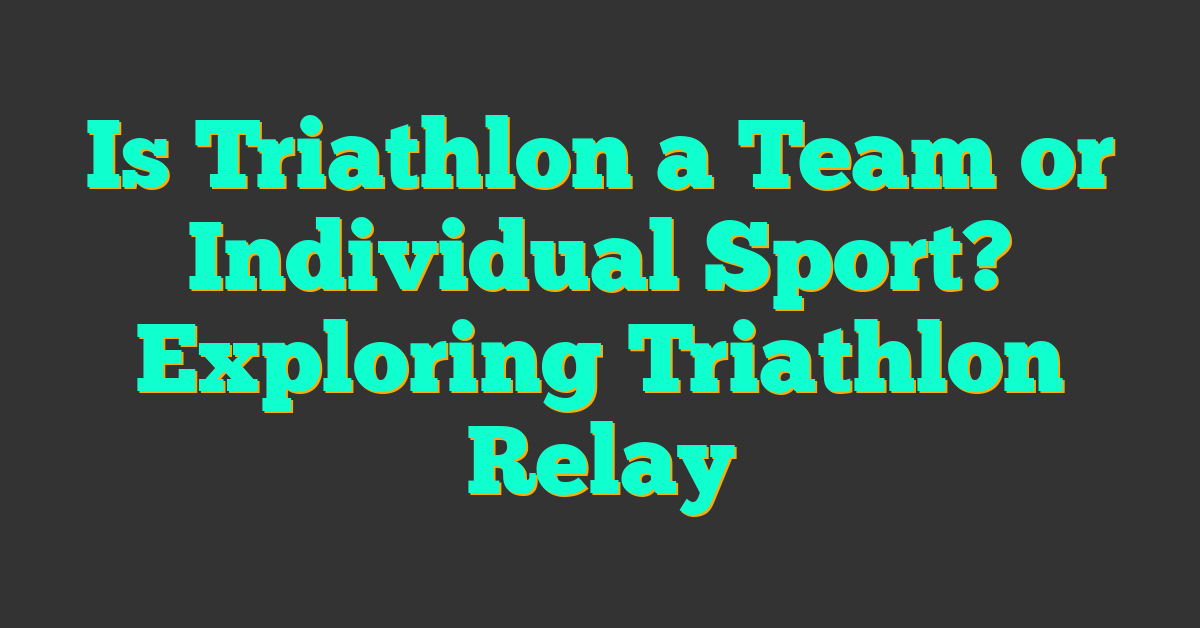Competing in a coastal triathlon is both exhilarating and demanding. I’ve experienced firsthand how the sun, salty air, and sandy terrain can push your limits every step of the way.

Staying properly hydrated is crucial for maintaining energy and endurance during these challenging races. It’s not just about drinking water; it’s about balancing electrolytes and timing your intake right to keep you performing at your best.
In this article, I’ll share my top hydration strategies to help you tackle your next coastal triathlon with confidence and ease.
Importance of Hydration in Triathlon Coastal Races
Maintaining proper hydration optimizes performance and prevents health issues during coastal triathlon races. Dehydration reduces endurance, increases fatigue, and impairs cognitive function. Coastal environments amplify these effects due to higher temperatures, salty air, and increased sweat loss.
Key Factors Affecting Hydration
- Higher Temperatures: Elevated temperatures accelerate sweat production, leading to greater fluid loss.
- Salty Air: Inhaled salt increases electrolyte depletion, requiring more precise balance.
- Sandy Terrain: Physical exertion on sand demands additional energy and hydration to sustain performance.
Hydration Impact Statistics
| Factor | Impact on Hydration |
|---|---|
| Average Temperature | 25°C increases sweat rate by 20% |
| Sweat Rate | 1.5 liters lost per hour |
| Electrolyte Loss | 500 mg sodium lost per liter sweat |
Proper hydration regulates body temperature, maintains blood volume, and supports muscle function. Balancing water intake with electrolytes ensures sustained energy levels and reduces the risk of cramps and heat-related illnesses.
Understanding Coastal Race Challenges
Competing in coastal triathlons presents unique challenges that require tailored hydration strategies. Recognizing these obstacles ensures sustained performance and endurance.
Effects of Saltwater Environment
The salty air in coastal areas accelerates electrolyte depletion, increasing the risk of imbalances. Sodium and potassium loss through sweat impairs muscle function and elevates cramp susceptibility. Additionally, salt residue on the skin can draw moisture out, intensifying dehydration.
Impact of Heat and Humidity
High temperatures and humidity levels heighten sweat production, leading to faster fluid loss. Elevated humidity slows evaporation, reducing cooling efficiency and amplifying dehydration risks. These conditions also increase cardiovascular strain, making effective hydration crucial for maintaining energy and preventing fatigue.
| Factor | Impact |
|---|---|
| Sweat Rate | Increases by 20% at 25°C |
| Electrolyte Loss | Significant loss of sodium and potassium |
Pre-Race Hydration Strategies
Preparing for a coastal triathlon requires strategic hydration to ensure peak performance. Implementing effective pre-race hydration can significantly impact your endurance and overall race experience.
Optimal Fluid Intake Timing
Establish a hydration schedule starting days before the race. Increase fluid intake two days prior, aiming for 3 liters daily. On race morning, consume 500 milliliters two hours before the start. Sip 200 milliliters every 15 minutes leading up to the race to maintain optimal hydration levels.
Balancing Electrolytes Before the Race
Incorporate electrolyte-rich foods into your diet the week before. Include items like bananas, nuts, and sports drinks to ensure adequate sodium, potassium, and magnesium levels. Two hours before the race, consume a balanced meal with a 3:1 ratio of carbohydrates to electrolytes. This balance supports muscle function and prevents cramps during the race.
Hydration During the Race
Maintaining proper hydration throughout the race is crucial for peak performance and endurance. Effective hydration strategies help sustain energy levels and prevent fatigue.
Fluid Consumption Guidelines
Staying hydrated involves a strategic intake of fluids. Here’s how I manage my fluid consumption during a coastal triathlon:
- Swim Segment: I drink 200 milliliters every 30 minutes to compensate for sweat loss in the water.
- Bike Segment: I consume 500 milliliters per hour, adjusting based on temperature and exertion level.
- Run Segment: I sip 200 milliliters every 20 minutes to maintain hydration while on the move.
| Race Segment | Recommended Fluid Intake |
|---|---|
| Swim | 200 ml every 30 minutes |
| Bike | 500 ml per hour |
| Run | 200 ml every 20 minutes |
Managing Electrolyte Balance
Balancing electrolytes is essential to prevent muscle cramps and maintain optimal nerve function. Here’s my approach:
- Use Electrolyte Drinks: I choose beverages with a 3:1 ratio of carbohydrates to electrolytes to ensure proper absorption.
- Salty Snacks: I consume salty gels or snacks during transitions to replenish sodium levels.
- Monitor Signs: I watch for signs of electrolyte imbalance, such as dizziness or muscle cramps, and adjust intake accordingly.
| Electrolyte Source | Purpose |
|---|---|
| Electrolyte Drinks | Replenish sodium and potassium |
| Salty Snacks | Boost sodium levels |
| Electrolyte Tablets | Convenient supplementation |
By adhering to these fluid and electrolyte guidelines, I maintain my performance and reduce the risk of dehydration-related issues during coastal triathlons.
Post-Race Hydration and Recovery
Immediately after finishing a coastal triathlon, rehydrating efficiently is crucial for recovery. I prioritize replenishing lost fluids and electrolytes to restore my body’s balance. Drinking 500 milliliters of an electrolyte-rich beverage within the first 30 minutes post-race helps accelerate recovery.
Replenishing Fluids and Electrolytes
Restoring electrolyte levels minimizes muscle cramps and fatigue. I consume a mix of water and electrolyte drinks, aiming for a 3:1 ratio of carbohydrates to electrolytes. This balance supports muscle repair and energy replenishment.
| Fluid Type | Amount | Purpose |
|---|---|---|
| Electrolyte Drink | 500 ml | Replenish electrolytes |
| Coconut Water | 300 ml | Natural electrolyte source |
| Water | 700 ml | Restore overall hydration |
Nutrient-Rich Recovery Meals
Eating a balanced meal within two hours post-race supplies necessary nutrients. I include carbohydrates for glycogen replenishment and proteins for muscle repair. A typical meal consists of grilled chicken, quinoa, and mixed vegetables.
Stretching and Light Activity
Engaging in gentle stretching helps reduce muscle stiffness. I spend 10-15 minutes stretching major muscle groups, focusing on legs and back. Light walking also promotes blood circulation, aiding in the removal of metabolic waste.
Rest and Sleep
« Triathlon Training for Coastal vs. Inland Races: Key Strategies and Tips
Best Hydration Gels for Triathlon Racing: Top Picks to Boost Your Performance »
Adequate rest is essential for full recovery. I ensure I get at least eight hours of quality sleep each night following the race. This rest period allows my body to repair tissues and restore energy levels effectively.
Monitoring Recovery Progress
Tracking how I feel post-race helps adjust my recovery routine. I note any lingering soreness or fatigue and modify my hydration and nutrition plans accordingly. Using a recovery journal ensures I stay on top of my post-race needs.
By following these post-race hydration and recovery strategies, I effectively restore my body’s balance, prepare for future training sessions, and maintain overall health after challenging coastal triathlons.
Recommended Hydration Products and Tools
Choosing the right hydration products can make a significant difference in your coastal triathlon performance. Here are my top picks for hydration products and tools:
Hydration Bottles
I rely on lightweight, BPA-free bottles for easy carrying during transitions.
- Nalgene Sports Bottle
- Durable and leak-proof
- 24-ounce capacity
- CamelBak Podium Bottle
- Bottle-specific squeeze design
- Fits most bike cages
Electrolyte Supplements
Maintaining electrolyte balance is crucial, especially in salty coastal environments.
- Nuun Sport Tablets
- Contains sodium, potassium, and magnesium
- Easy to dissolve in water
- Skratch Labs Hydration Mix
- Natural ingredients
- Provides a balanced electrolyte profile
Hydration Packs
For longer segments, a hydration pack ensures you stay fueled without frequent stops.
- CamelBak Ultra Belt
- Holds 500 milliliters
- Quick-access pockets for gels and snacks
- Salomon Agile 200 Set
- Compact design
- Integrated bottle holders
Insulated Water Bottles
Keeping your fluids cool can enhance hydration efficiency.
- Hydro Flask Standard Mouth
- Keeps drinks cold for up to 24 hours
- Lightweight and durable
- YETI Rambler Bottle
- Double-wall vacuum insulation
- Resistant to dents and punctures
Portable Hydration Systems
These systems offer flexibility and ease of use during the race.
- TriggerPoint Hydration
- Quick-release bite valve
- Leak-proof design
- Ultimate Direction Hydration Device
- Ergonomic shape
- Includes storage compartments
Smart Hydration Devices
Track your fluid intake and stay on top of your hydration needs with smart devices.
- Hidrate Spark Smart Water Bottle
- Syncs with your smartphone
- Reminds you to drink regularly
- Nix Hydration Sensor
- Attaches to any bottle
- Monitors your hydration levels in real-time
Comparison of Top Hydration Products
| Product | Type | Capacity | Key Feature |
|---|---|---|---|
| Nalgene Sports Bottle | Hydration Bottle | 24 oz | Durable, leak-proof |
| Nuun Sport Tablets | Electrolyte Supplement | N/A | Easy to dissolve, balanced electrolytes |
| CamelBak Ultra Belt | Hydration Pack | 500 ml | Quick-access pockets |
| Hydro Flask Standard Mouth | Insulated Bottle | 22 oz | Keeps drinks cold 24 hours |
| TriggerPoint Hydration | Portable System | 18 oz | Quick-release bite valve |
| Hidrate Spark Smart Bottle | Smart Device | 20 oz | Syncs with smartphone |
Investing in these hydration products and tools helps ensure you stay properly hydrated, maintain electrolyte balance, and perform your best during coastal triathlons.
Conclusion
Preparing for a coastal triathlon is an exciting challenge. Staying properly hydrated makes all the difference in how you perform and feel on race day. By planning your fluid intake and balancing electrolytes, you set yourself up for success.
Investing in the right hydration tools can simplify your race strategy and keep you focused on your goals. Remember to listen to your body and adjust as needed. With the right approach, you’ll not only complete the race but enjoy every moment of the journey.
Good luck out there and stay hydrated!










